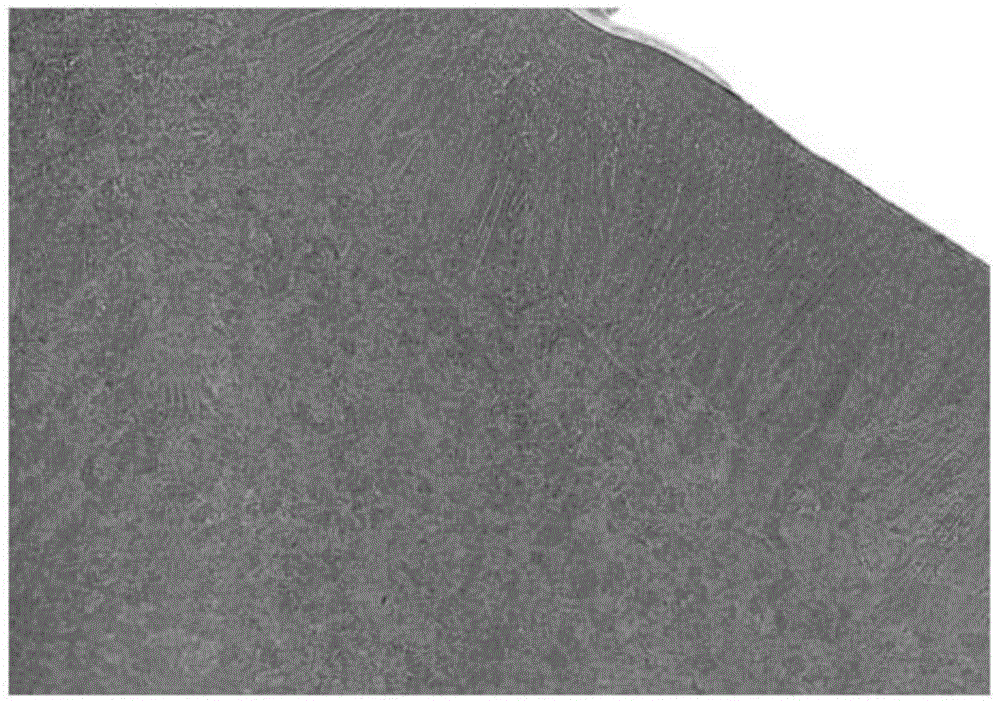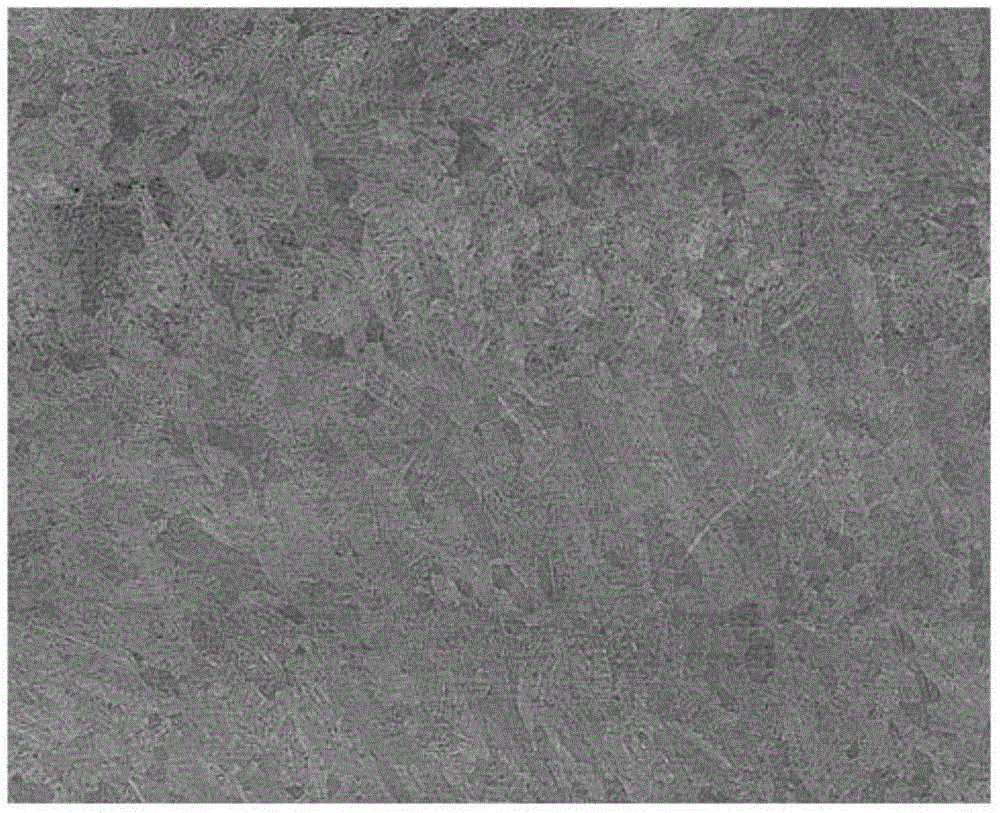Etching agent and detecting method for macroscopic structure and defects of steel
A technology of macroscopic structure and detection method, which is applied in the direction of measuring devices, preparation of test samples, material analysis through optical means, etc., can solve the problem of high cost of heating devices, hoisting equipment and test sites, unsatisfactory, mechanical processing traces, etc. problems, to achieve the effects of low surface finish and flatness of the sample, solving poor finish and flatness, and solving equipment and site problems
- Summary
- Abstract
- Description
- Claims
- Application Information
AI Technical Summary
Problems solved by technology
Method used
Image
Examples
Embodiment 1
[0027] The macrostructure and defect corrosion reagent of the steel of the present embodiment are divided into three sub-reagents according to the order of use; the composition and weight percentage of the first sub-reagent are: H 2 SO 4 7%, HNO 3 20%, H 2 O73%; the composition and weight percentage of the second sub-reagent are: HNO 3 30%, H 2 O70%; the composition and weight percentage of the third sub-reagent are: HNO 3 5%, H 2 O95%.
[0028] The method for using the corrosion reagent of this embodiment to detect the macrostructure and defects of steel comprises the following steps:
[0029] 1) The sample in this example is a 100-ton low-pressure rotor steel ingot (the material grade is 30CrNiMoV), and its cross-sectional size is 3.6m×2.5m; the surface of the sample after machining is pre-treated, and the pre-treatment includes grinding to remove the sample. The processing traces on the surface of the sample and the removal of surface oil stains; a portable angle gri...
Embodiment 2
[0036] The macrostructure and defect corrosion reagent of the steel of the present embodiment are divided into three sub-reagents according to the order of use; the composition and weight percentage of the first sub-reagent are: H 2 SO 4 5%, HNO 3 25%, H 2 O70%; the composition and weight percentage of the second sub-reagent are: HNO 3 35%, H 2 O65%; the composition and weight percentage of the third sub-reagent are: HNO 3 3%, H 2 O97%.
[0037] The method for using the corrosion reagent of this embodiment to detect the macrostructure and defects of steel comprises the following steps:
[0038] 1) The sample in this example is a K90ML-L crank throw forging; the surface of the sample after machining is pre-treated, and the pre-treatment includes grinding to remove the processing marks on the surface of the sample and removing oil stains on the surface; the grinding uses a portable angle grinder Machine, although there is poor flatness on the surface of the sample, and th...
Embodiment 3
[0045] The macrostructure and defect corrosion reagent of the steel of the present embodiment are divided into three sub-reagents according to the order of use; the composition and weight percentage of the first sub-reagent are: H 2 SO 4 10%, HNO 3 25%, H 2 O65%; the composition and weight percentage of the second sub-reagent are: HNO 3 25%, H 2 O75%; the composition and weight percentage of the third sub-reagent are: HNO 3 4%, H 2 O96%.
[0046] The method for using the corrosion reagent of this embodiment to detect the macrostructure and defects of steel comprises the following steps:
[0047] 1) The sample in this example is No. 45 steel grit ingot; pretreatment is carried out on the surface of the sample after machining, and the pretreatment includes grinding to remove the processing traces on the surface of the sample and removing oil stains on the surface; a portable angle grinder is used for grinding , although there is poor flatness on the surface of the sample,...
PUM
| Property | Measurement | Unit |
|---|---|---|
| surface roughness | aaaaa | aaaaa |
Abstract
Description
Claims
Application Information
 Login to View More
Login to View More - R&D
- Intellectual Property
- Life Sciences
- Materials
- Tech Scout
- Unparalleled Data Quality
- Higher Quality Content
- 60% Fewer Hallucinations
Browse by: Latest US Patents, China's latest patents, Technical Efficacy Thesaurus, Application Domain, Technology Topic, Popular Technical Reports.
© 2025 PatSnap. All rights reserved.Legal|Privacy policy|Modern Slavery Act Transparency Statement|Sitemap|About US| Contact US: help@patsnap.com



